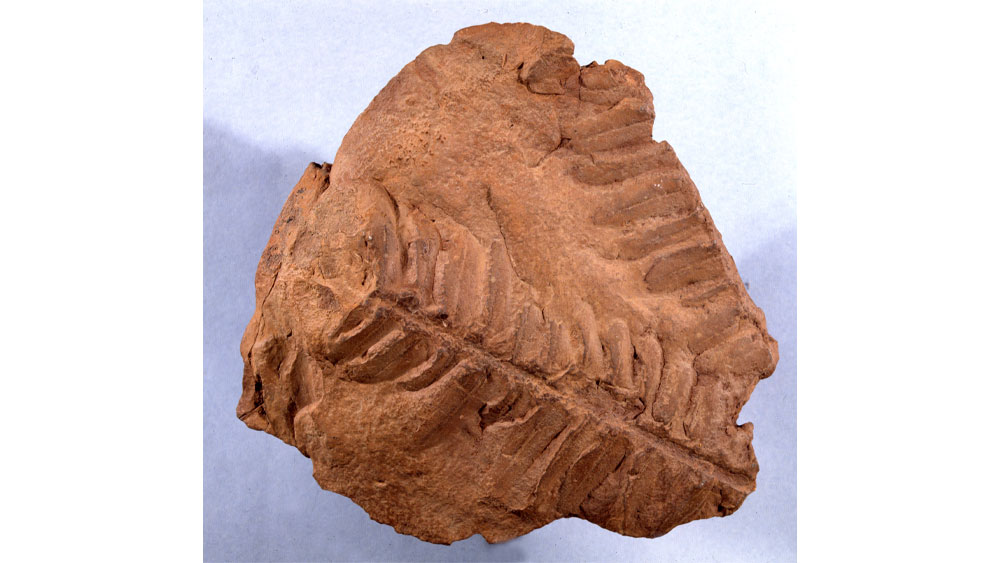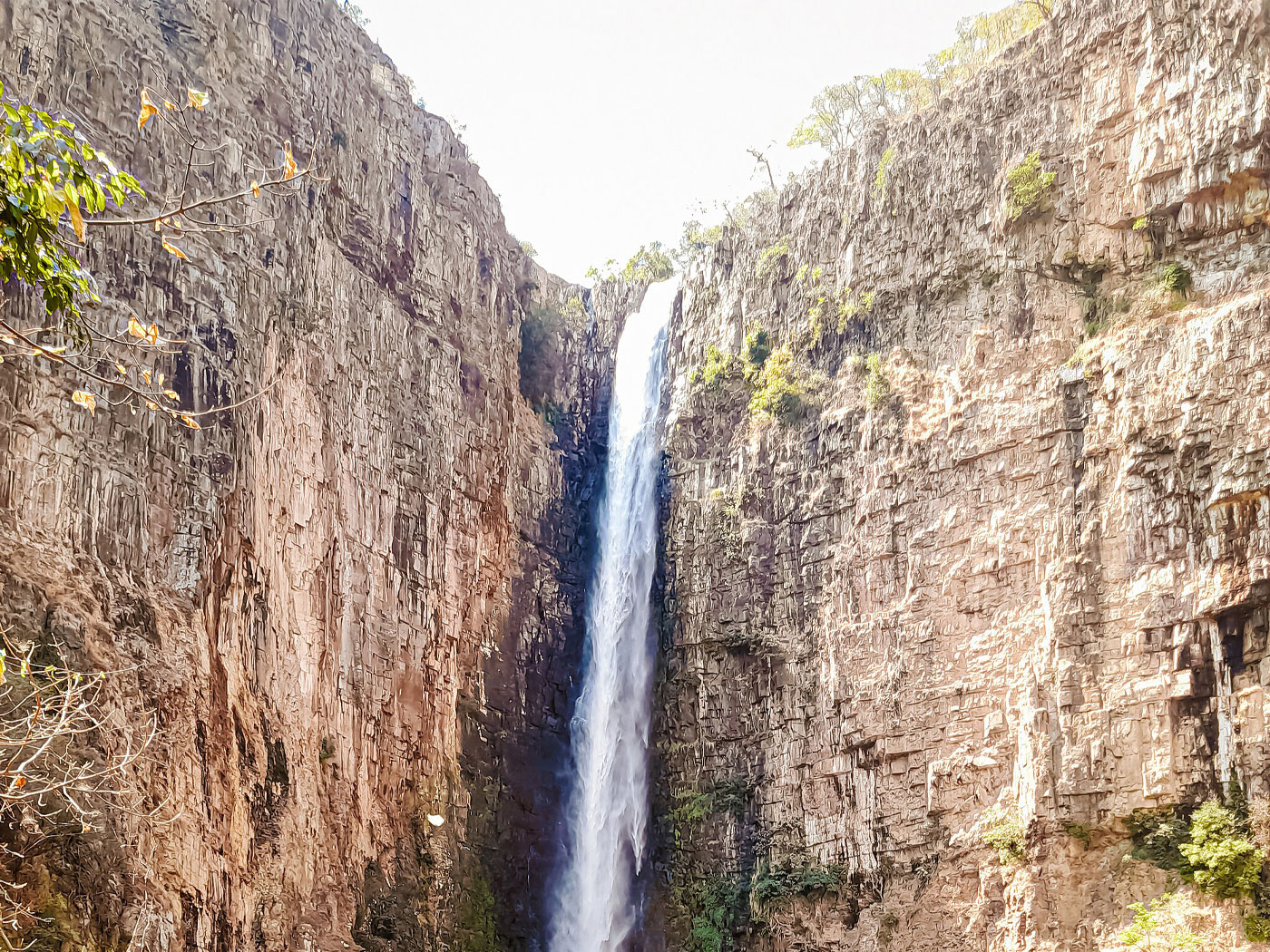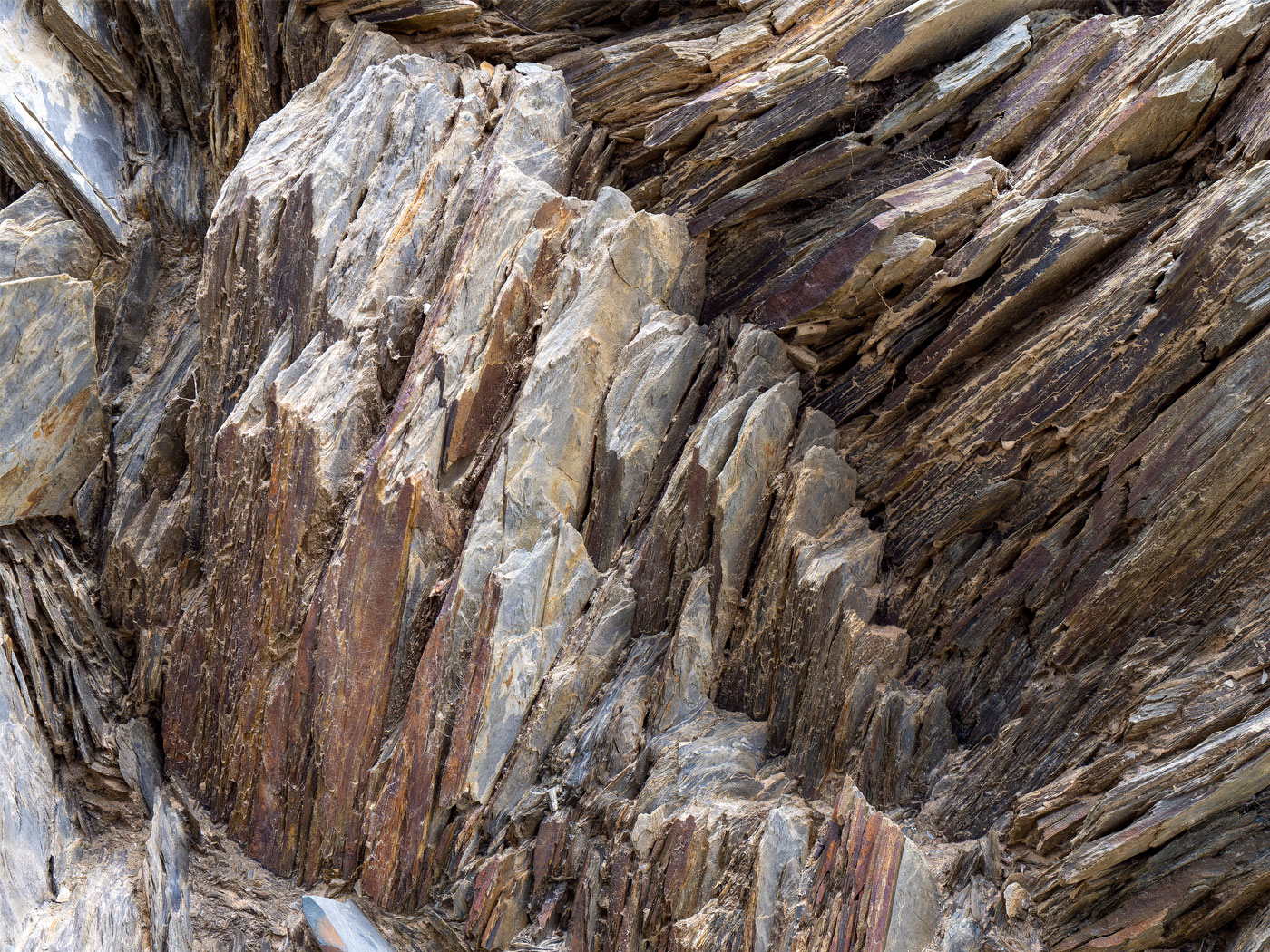The pre-Flood world thousands of years ago was unlike the world of today.1 Unfamiliar animals and plants were common, and there were a lot of them.
Pre-Flood plants were buried in Flood sediments and fossilized. Petrified trees are found in certain layers of Flood-deposited sedimentary rocks worldwide.2 Paleontologists often find fossilized leaves, twigs, or fern impressions, and it’s not uncommon to find such impressions looking very recent according, for example, to a research team associated with the National Science Foundation in Antarctica.
Something, as yet unknown, caused sediment to flood the area rapidly, which helped preserve the plants. [A researcher] splits open a grey slab of siltstone in the quarry to reveal amazingly well-preserved Triassic [mid-Flood] plant fossils, as if the leaves and stems had been freshly pressed into the rock only yesterday.3
Creation scientists suggest the obvious: a massive flood about 4,500 years ago was the agent of this “as yet unknown” watery event. This would explain why the fossil plants look amazingly well-preserved.4
Recently, scientists writing in Current Biology stated, “enigmatic fossil plants with three-dimensional, arborescent-growth architecture” were found in New Brunswick, Canada.5
Research revealed there was nothing simple about these fossil plants.
These fossils display an extraordinarily dense spiral-branching pattern and produced long, functional, compound leaves retained along a narrow trunk, resulting in a tree-crown volume of >20–30 m3. The scale of this plant’s form indicates a growth strategy of maximizing light interception and reducing resource competition from ground cover.5
The discovery of the fossil plant’s morphology caused the scientists to state that “plant life in the Early Carboniferous period [around day 40 of the Flood] was more complex than expected,”6 which is hardly surprising to creationists since they recognize that God created plants and animals complete in the beginning.
In addition, the “densely arrayed compound leaves provide expansive photosynthetic surface and cover,” and “although systematically unresolved, this specimen shows that Early Carboniferous vegetation was more complex than realized, signaling that it was a time of experimental, possibly transitional and varied, growth architectures.”5 But there’s not a hint of a gradual evolutionary process leading to such complexity—just the sudden appearance of fossils of very complex, albeit strange, trees of the pre-Flood world.
The fossils really are puzzling: “‘The way in which this tree produced hugely long leaves around its spindly trunk, and the sheer number over a short length of trunk, is startling,’ says Robert Gastaldo of Colby College in Waterville, Maine,” as recorded in Science Daily.6
“The history of life on land consists of plants and animals that are unlike any of those that live at the present,” Gastaldo says. “Evolutionary mechanisms operating in the deep past resulted in organisms that successfully lived over long periods of time, but their shapes, forms, growth architectures, and life histories undertook different trajectories and strategies. Rare and unusual fossils, such as the New Brunswick tree, is but one example of what colonized our planet but was an unsuccessful experiment.”6
Exactly what these vague evolutionary mechanisms were are not listed, and there is no way to scientifically validate that this was an unsuccessful experiment. How can nature experiment when it has no intellect? This description is simply based on the authors’ assumptions. The unique New Brunswick tree, like so many other pre-Flood animals and plants, probably became extinct during the Flood.
Speaking of which, this catastrophic burial reads suspiciously like the consequence of a massive flood.
The plant’s exceptional and environmentally atypical preservation resulted from an uncommon set of geological circumstances where earthquake-induced slumping of marginal rift-lake soils transferred whole trees, leaf litters, and sediments to lake depths where they were buried, entombed, and preserved.5
We see such atypical fossil preservation in sediments laid down by running water all over the world—such as these puzzling plants in New Brunswick, Canada. The evidence points clearly to Flood deposition, as taught in the early chapters of Genesis.
References
- Thomas, B. 2016. What Was the Pre-Flood World Like? Acts & Facts. 45 (1): 20.
- Morris, J. 1995. How Long Does It Take for Wood to Petrify? Acts & Facts. 24 (10).
- Video: Research team discovers plant fossils previously unknown to Antarctica. National Science Foundation. Posted on phys.org April 30, 2015.
- Thomas, B. Fossil Plants Contain Original Molecules. Creation Science Update. Posted on ICR.org August 3, 2017.
- Gastaldo, R. A. et al. 2024. Enigmatic fossil plants with three-dimensional, arborescent-growth architecture from the earliest Carboniferous of New Brunswick, Canada. Current Biology. 34: 1–12.
- Rare 3D fossils show that some early trees had forms unlike any you've ever seen. Cell Press. Posted on sciencedaily.com February 2, 2024.
Stage image: Fern fossil
Stage image credit: Copyright © Grand Canyon National Park, 2010. Used in accordance with federal copyright (fair use doctrine) law. Usage by ICR does not imply endorsement of copyright holder.
* Dr. Sherwin is science news writer at the Institute for Creation Research. He earned an M.A. in zoology from the University of Northern Colorado and received an Honorary Doctorate of Science from Pensacola Christian College.




















